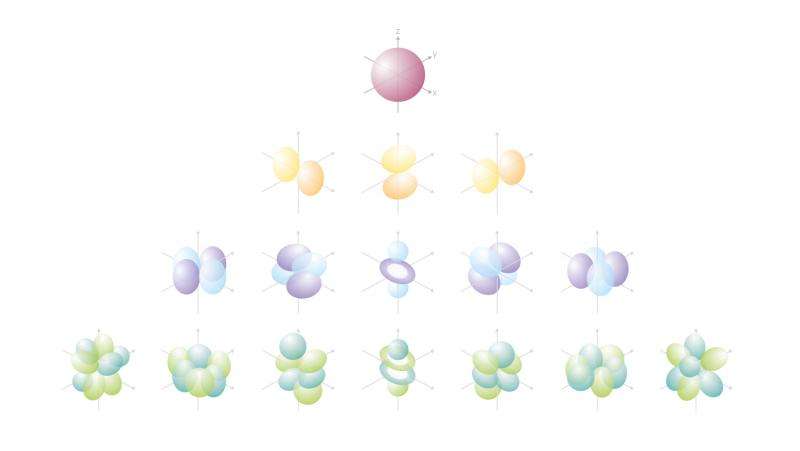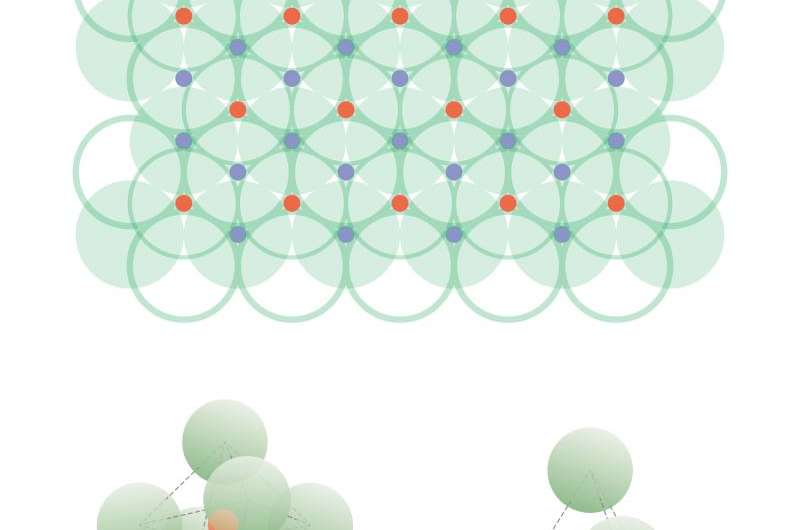Physicists 'undiscover' technetium carbide

An international team of scientists led by Artem Oganov, head of the Computational Materials Discovery Lab at MIPT, has proven that technetium carbide does not exist—it was pure technetium that was wrongly identified as such. This is significant for the chemistry of transition metal carbides which are considered to be promising substances. The article was published in RSC Advances.
Transition metals are elements with electrons responsible for forming chemical bonds that are located in a specific position within the atom, on d-orbitals. The list of such metals also includes well-defined iron and copper, as well as radioactive technetium, which scientists synthesized in the mid-20th century using accelerators, and later extracted from radioactive waste. Compounds of transition metals with carbon are called carbides. They are usually hard, heat-resistant substances with a varying ratio of carbon and metal content—there are, for example, a chromium carbide CrC2 and a chromium carbide Cr23C6. Speculating on what carbides can be synthesized in principle intrigues not just theorists, but also engineering professionals and chemical technology specialists. While engineers strive for strong, heat-resistant coatings for cutting tools, chemists value carbides for their ability to act as chemical catalysts similar to expensive platinum plates.
There is currently no universal and simple way to predict the existence of certain chemical compounds, and the substance thought to be technetium carbide was controversial—some researchers claimed that they managed to synthesize it; others doubted the correctness of the published data. Using an available USPEX algorithm, a group of scientists modeled a number of transition metal carbides and convincingly demonstrated that carbide technetium cannot be obtained.

What was done and how
To find out whether low-carbon carbides (containing fewer carbon atoms than metal atoms) are stable, the authors calculated two key parameters: the energy of metal atoms' bonding (ECoh) and the energy for introducing carbon into a transition metal (EC-dis)—that is, the energy required to insert carbon in the crystal lattice. When EC-dis value is negative, carbon insertion into the octahedral voids of the metal lattice is favorable. In such metals as ruthenium or osmium, both values are very large, as these metals are quite inert—they cannot form carbides in principle.
To assess the stability of high-carbon compounds, the authors calculated the energy required to form monocarbide (ETMC). Some of ETMC values were negative, meaning that the formation of such monocarbides was energetically favorable, and they must be stable when actually synthesized. Among the metals that can be successfully fused with carbon are titanium, vanadium, zirconium, niobium, hafnium and tantalum. For these, the monocarbide formation energy and the carbon insertion energy are both negative, i.e., these processes are energetically favorable, which means monocarbides of these metals exist and are stable.
Iron, chromium, magnesium and technetium belong to the Green Group, having positive formation energy for FeC, CrC, MnC and TcC. Therefore, these monocarbides are unstable. In addition, the energy of carbon insertion is also greater than zero, so having it in the lattice is energy-inefficient. It turns out that the previously "discovered" technetium monocarbide stumbles at the fundamental laws of nature, so onle Tc10C , Tc8C and Tc6C can be synthesized. This is the outcome of the USPEX simulation algorithm, and it is perfectly consistent with the findings of researchers who have actually obtained these compounds.
False trail
Physicists have also explained the data that was previously interpreted in favor of technetium monocarbide. Previously, the key evidence was represented by a radiograph showing two indicative peaks.
The X-ray Phase Identification Method is based on the fact that different substances have different interplanar spacing (atom balls of various substances have different diameters, and hence the thickness of layers that they form). Therefore, every substance produces a unique line pattern on a radiograph. By analyzing the location and intensity of the lines, it is possible to draw a conclusion about how much of a certain substance is contained in the sample.
However, when they modeled the X-ray scattering process in pure technetium, scientists saw a very similar picture, and even better matching experimental data. This proves that previous researchers have mistaken the high-temperature cubic phase of the pure element for its carbide. 'Undiscovery' of the disputed compound allows to answer the question about an exotic substance, but it also systematizes our knowledge about transition metal carbide prospects in general.
"Chemistry of transition metal carbides is controversial—there may be different articles on the same material arguing for or against the possibility of its existence. In this paper, we added a modicum of clarity as to the causes of the formation of these compounds, and created a foundation for future research and quest for new carbides useful in practical applications. Additionally, sometimes an 'undiscovery' of a substance such as ТсС at the right moment can save time for contemporary and future researchers in the field," said Oleg Feya, the study co-author and a Computational Materials Discovery Lab fellow.
More information: Qinggao Wang et al. Explaining stability of transition metal carbides – and why TcC does not exist, RSC Adv. (2016). DOI: 10.1039/C5RA24656C
Provided by Moscow Institute of Physics and Technology




















